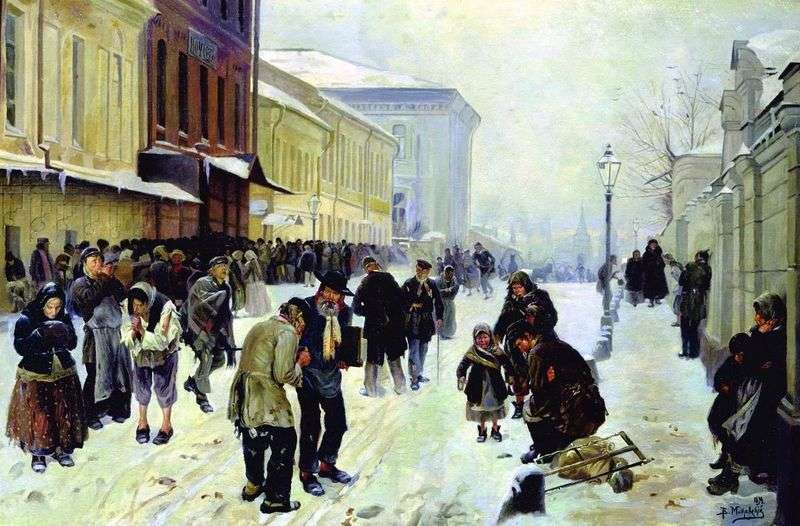
In the works of Vladimir Egorovich Makovsky, motifs of lyrical, bright perception of national life got their embodiment. The small painting canvas “Girl with geese in the field”, written in 1875, refers to a series of paintings dedicated to the life of peasant children.
Creating with great love and warmth of children’s images, the artist saw his task in discovering in a routine situation the peculiar poetry of everyday life, the beauty of national life. The liveliness and accuracy of the works of Makovsky was the ability to see the moment, which then became the basis of the plot. “A picture is not a word,” the artist liked to say, “it gives one minute, and in that minute there should be everything, but no – there is no picture.”
The scene full of subtle observations was written by Makovsky with great expressiveness: both the rural landscape and the heroine herself are a charming girl in her immediacy, herding birds. The portrait basis of the image is undoubted, although, in all likelihood, it is somewhat idealized. The figure of the girl, close to the first plan, looks significant against the background of a transparent blue summer sky. The artist attentively peers at her pretty, slightly thoughtful face, at the details of the costume.
The picture shows the evolution of Makovsky’s creative method: from reserved manners to more relaxed, from detailed narration to artistic generalization and emotional freedom, from the coloristic isolation of figures and objects to color unity. With his imagery, bright lyrical mood, the work echoes the portrait-genre painting of V. A. Tropinin, from whom Makovsky received his first professional lessons. The characteristic scene from the life of peasant children is simple and natural, but this is not a simple-minded copying from life in the spirit of the artists of everyday life of the 1850-1860s: in this picture there is the attitude of the author to the model.
The ease of building a composition, fragmentation introduces the viewer into the emotional atmosphere of the work, creating the effect of presence. The deep sympathy and respect of the artist for an ordinary person is also transmitted to the viewer. And the pictorial intonation itself coincides remarkably with the depicted scene: the author highlights the palette, seeks to convey light and air, the natural colors of nature. And the melody sounds in the picture is clear, kind of healing, giving peace of mind. Used materials of the book: M. Ageeva M, E. Ilina, L. Smirnykh “Nizhny Tagil Museum of Fine Arts”
 Peasant children by Vladimir Makovsky
Peasant children by Vladimir Makovsky Grandma Game by Vladimir Makovsky
Grandma Game by Vladimir Makovsky On the boulevard by Vladimir Makovsky
On the boulevard by Vladimir Makovsky Condemned by Vladimir Makovsky
Condemned by Vladimir Makovsky Bank collapse by Vladimir Makovsky
Bank collapse by Vladimir Makovsky Group portrait of M. S. Volkov, S. N. Volkova and S. M. Volkov-Manzey by Vladimir Makovsky
Group portrait of M. S. Volkov, S. N. Volkova and S. M. Volkov-Manzey by Vladimir Makovsky Lodging house by Vladimir Makovsky
Lodging house by Vladimir Makovsky Date by Vladimir Makovsky
Date by Vladimir Makovsky